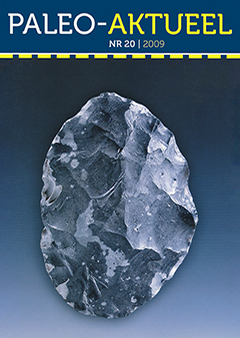Neolithische boeren in het Groninger kustgebied
Samenvatting
Neolithic farming in the Groningen coastal area. In successive years, variously-sized pieces of wood from Scots pine and yew were ploughed up from the clayey soil at Zwartdam (province of Groningen). The 40 cm thick deposit of marine clay overlies a 45 cm thick layer of in situ peat, which was investigated for pollen to detect the vegetational and hydrological history of the area. By extrapolation, the peat section is reckoned to cover the time from slightly before 4800 BP until about 4500 BP. Peat formation starts as a result of rising groundwater levels. During Zone 1, mixed woodland prevails with alder, lime, oak, hazel and pine. Later on, birch, alder and hazel dominate the woody vegetation. The pollen record shows evidence of Neolithic farming in the coastal area of Groningen, including small-scale growing of cereal (barley) and cattle herding, which started only some decades after the expansion of peat. Together with the start of agriculture, yew settles, reaching its highest pollen values from c. 4650 BP. It is suggested that this species benefited from the disturbance caused by farming activities or might even have been propagated intentionally by man. Judging from the calibrated 14C dates, pineand yew were able to maintain themselves after 4500 BP. As salt-intolerant species, they would have been growing on a peat substrate. This means that peat continued to grow in the period after 4500 BP and subsequently underwent erosion by seawater. Evidence from Rijpmakanaal (2 km west of Zwartdam) shows a gradual increase of marine influence from c. 4200 BP. The deposition of marine silts in Zwartdam therefore most probably has a post quem date of 4200 BP.

